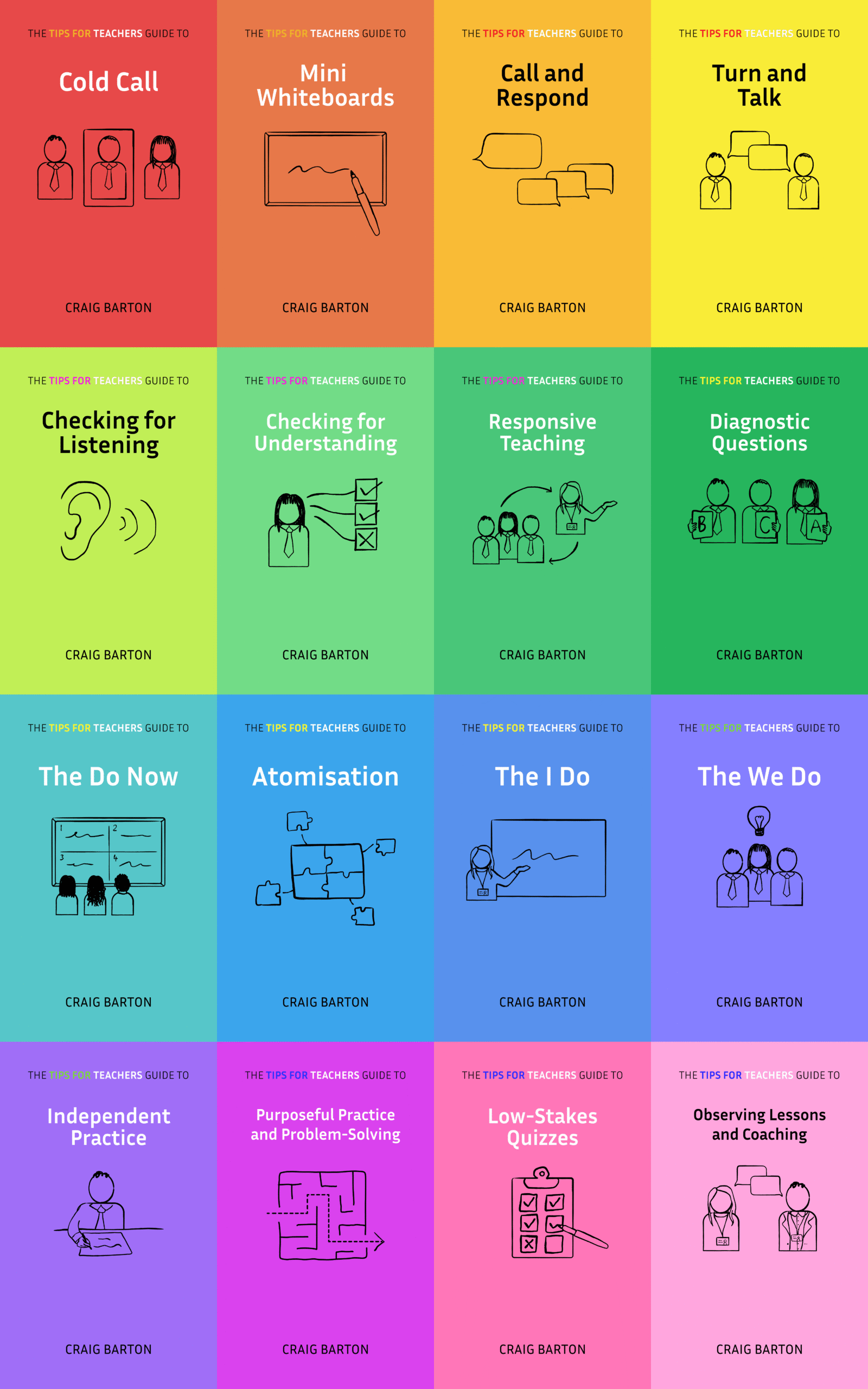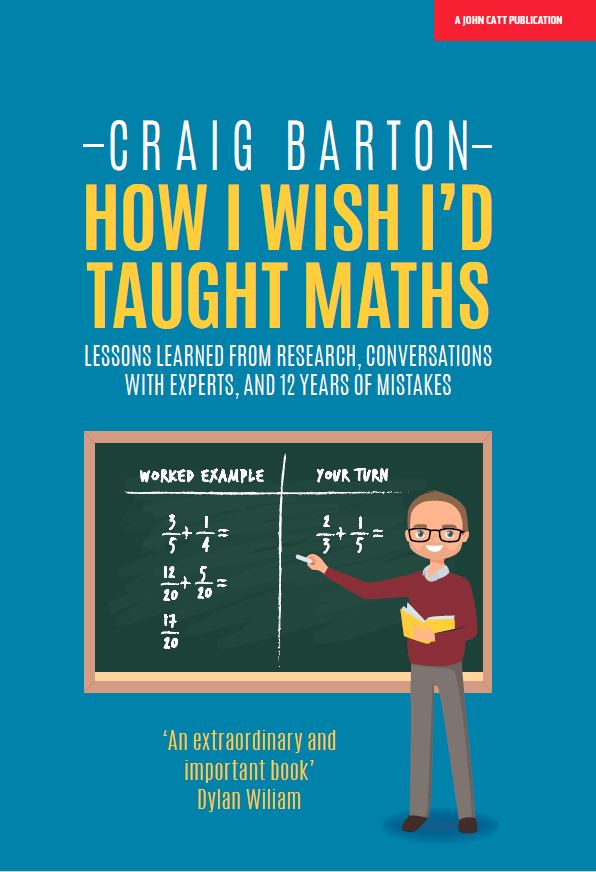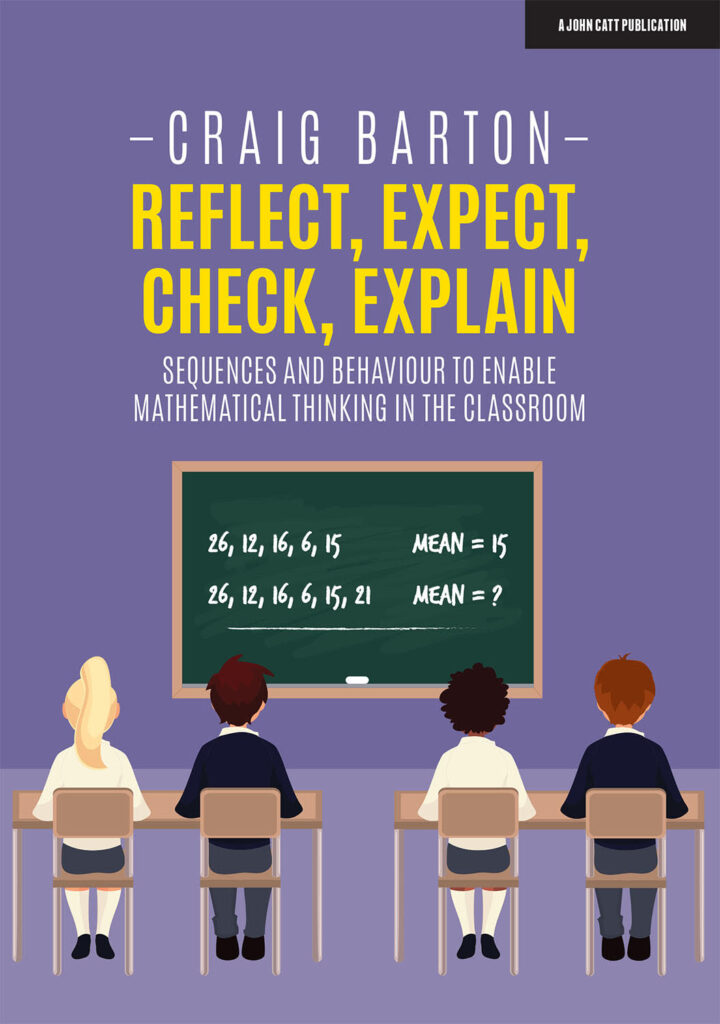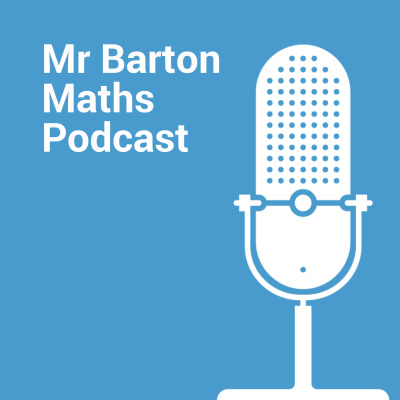
Supporting students in developing the tools and resilience necessary to solve unfamiliar problems is, quite rightly, regarded as the holy grail of maths teaching.
At a pragmatic level, if students can identify what an unfamiliar problem is asking them to do, and then select the correct set of tools to solve it, they are more likely to thrive in high-stakes exams where twists and turns are prevalent. But at a more fundamental level, problem-solving is what maths is – or at least should be – all about. We learn procedures so we can do interesting things with those procedures.
***You can purchase a 90-minute online workshop on Problem-solving that you can share with colleagues at a CPD event or departmental meeting here***
- Diagnosis
- Evidence
- Solution steps
- Where does problem-solving fit into a Learning Episode?
- Solutions that don’t really work
- Solutions that can work
- Teachers preparing to use a problem-solving activity
- Problem-Solving Structure #1: SSDD problems
- Problem-Solving Structure #2: No number problems
- Problem-solving Structure #3: Non-routine problems
- Where do I find the time in lessons for problem-solving?
- Want to know more?
- Implementation planning
- 90-minute online workshop
Diagnosis
- What does the phrase problem-solving mean to you?
- How regularly does problem-solving appear in your lessons?
- What challenges do you face?
Evidence
What do I mean by problem-solving?
There are many definitions of problem-solving.
In research on Cognitive Load Theory, “problems” are usually concepts that require the application of a procedure or algorithm to solve, and thus “problem-solving” becomes the correct application of that procedure. For example, see this from Gupta and Zheng (2020), where the problems to be solved are pairs of simultaneous equations presented without context or twists:

But I don’t think this is what most maths teachers mean when they use the phrase “problem-solving”. For me, the most useful conception comes from Colin Foster. Colin asks us to consider two tunnels:

We can see where we need to go with the tunnel on the left. The journey may be long and tricky, but the end is always in sight. This tunnel represents mathematical procedures. They may be short, such as simplifying fractions, or long, such as solving a pair of simultaneous equations like in the research paper above, but once we have learned the required steps, we can carry them out and reach our destination.
With the tunnel on the right, we are entering the unknown. We don’t immediately know where we are going, and as we journey, we may take some wrong steps. Eventually, things become clearer, and we see the light at the end of the tunnel. This is problem-solving. The path to the solution may be short or long, but what we need to do is not immediately obvious.
What I see
Many of the maths lessons I see each week do not contain the problems depicted by the tunnel on the right. Instead, they consist solely of questions depicted by the tunnel on the left.
Here are some examples from lesson drop-ins in a school I am supporting:




Students worked on these sets of questions during the final portion of the lesson. The teachers then projected the answers, students self-assessed, the teacher addressed any issues, and that was the lesson – and the coverage of this particular process – complete.
So what?
Nothing is wrong with these sets of questions. They are what I would classify as Consolidation. In a previous section, I argued that Consolidation was a necessary building block of a lesson. Its purpose is to help students gain confidence and competence in carrying out a procedure.
But – and it is a big BUT – if Consolidation is the sole constituent of a student’s mathematical diet, then we have a problem. As discussed above, students are unlikely to be able to cope with any significant twist or disguise that often occurs in GCSE questions. At a deeper level, if all students experience is consolidation practice, they start to view maths as a series of disconnected algorithms they must remember and carry out with no real purpose, and promptly switch off from the subject.
Why does this happen?
Of course, everyone knows that students need more than just Consolidation. And yet, this type of practice often dominates maths lessons. Having spoken to many Heads of Department and maths teachers over the last few years, I think there are several reasons why:
- Consolidation is easier to plan. You can grab a bunch of questions from a number of sources and use them in lessons without needing to do much preparation beforehand. Good problem-solving questions, on the other hand, are harder to source and even harder to create. Once you have found them, they require the teacher to take the time to work through the maths and then think hard about the support and challenge they may need to give their students in the lesson.
- Consolidation is easier to deliver. Students work their way through a set of questions, the teacher clicks onto the next slide where the answers are revealed, students mark their work, and on we go to the next topic. Problem-solving questions are a different beast. It is very difficult to predict how students will fare. A wrong answer, a conjecture, or insight could take the lesson in a completely different direction, far more so than it could with a straightforward set of Consolidation questions.
- Consolidation can help disguise a lack of subject knowledge. Armed with a set of questions and—crucially—a set of answers, most teachers can get through the lesson. Indeed, this is the very reason that cover lessons often consist exclusively of Consolidation questions. With problem-solving questions, the teacher needs to know the concept inside out to deal with the students’ unpredictable questions, methods, and solutions. With the high prevalence of non-subject specialists teaching secondary-level maths these days, this is a serious barrier.
- Students come to expect Consolidation and resist anything else. Students’ views can quickly become: in maths, the teacher shows us how to do something, we practice it, and then we go to Chemistry. I have worked with many maths teachers who tried a problem-solving activity only to find their students took one look at it and downed tools. Because it looked different to what they were used to, and seemed both hard and weird, students immediately gave up. Such negative experiences often cause teachers to fall back on what they know and avoid trying it out again.
- As a Head of Department, Consolidation is safer. If you have a department full of experienced maths specialists, then you may feel confident that even though your colleagues are pursuing a wide variety of approaches, using a wide variety of resources, the students will be getting an equally positive experience. But these days, in how many departments is that the case? I have yet to visit a department this year that does not consist of some colleagues who are in their first two years of teaching, or who are not maths specialists, or who are borrowed from another subject to teach the odd lesson a fortnight. So, in a bid for some consistency in such circumstances, many heads of department plan shared PowerPoints consisting mainly of examples to model and Consolidation practice to present.
- Schemes of work are too full. I hear this often: there is too much content to get through, leaving no room for anything else but Consolidation.
- The belief is that students need to have achieved a certain level of competence with a procedure before they can problem-solve. This often manifests itself in students having to almost “qualify” to be given problem-solving questions—proving they are worthy of them by answering a set of Consolidation questions quicker than their classmates. Or, typically, only the top sets get exposure to problem-solving questions because they move through the curriculum fast enough. Hence, many students are rarely challenged with a non-routine problem to solve.
- Teachers (and schemes of work) plan per lesson. As a result, there is rarely enough time in any given lesson to delve deep into problems.
Solution steps
Where does problem-solving fit into a Learning Episode?
In a previous section, I shared my Building Blocks of a Learning Episode. Referring to point 8 above, these are not single lessons. Planning in terms of Learning Episodes means we can give problem-solving activities the time they need.

If we are to be blunt, the challenge of problem-solving can be boiled down into two parts:
- Identify what the problem is asking us to do
- Go ahead and do it
Both aspects are important and often underrated.
Often students will fail to answer an unfamiliar problem on an assessment. Then, when the teacher goes through the answer, they will protest: Oh, if I had known that was what you had to do, I would have easily got it right. The point is, of course, knowing what to do is hard.
But the second part is just as important. If we use the strategies on this page to help our students become experts at figuring out what problems require them to do, only to find that students do not have the tools necessary to go ahead and do it, then we are still in trouble.
So, in my models of a Learning Episode, problem-solving comes towards the end, after a period of Consolidation and Purposeful Practice. The more secure students are with a procedure, the more likely they are to be able to do something more sophisticated with that procedure.
Including Purposeful Practice before problem-solving has the advantage of setting students up to think deeply about a procedure, making the transition to problem-solving more secure.
Solutions that don’t really work
I see two common ways maths departments choose to tackle problem-solving:
1. Equating Problem-solving with GCSE exam questions
First, I see problem-solving equated with GCSE questions. So, at the end of a lesson on sharing in a ratio, Year 8 students are shown this GCSE question:

Students can do it, and they feel great because they answer a question aimed at students 3 years older than them. However, the whole lesson has been about sharing in a ratio, so students don’t have to think hard about the approach needed to solve the problem. This is not problem-solving; this is just further Consolidation.
2. Problem-solving as an optional add-on
The second thing I see maths departments do is include challenging, problem-solving-type questions or tasks on slide 63 of an epic PowerPoint, or tucked away in Column M on the Excel version of the scheme or work. The issue here is that few classes and few students ever get to this point, and therefore, whole cohorts of students may never experience anything above and beyond Consolidation.
Solutions that can work
I like activity structures that I can repeat across topics and across year groups. The more we repeat activity structures, the more my students can focus their attention on the maths, and the better I get at coordinating the activity.

I have three types of problem-solving structures that I use in every Learning Episode. They each serve a different purpose:
- SSDD problems: help identify what a question is about and the method required to unlock it
- No number problems: help with wordy, in-context problems where students often get overwhelmed by information
- Non-routine problems: help develop and recognise when to use problem-solving tactics that can be used across a wide range of problems.
However, a problem is only as good as how it is implemented in the classroom. So, below, I will describe in detail the structures I use to help students get the most out of these types of problems.
Teachers preparing to use a problem-solving activity
No matter how good the activity looks or how strong a mathematician you are, the best way you can prepare to use the activity in your lesson is to do the problem yourself.
I say this all the time, but it rarely happens. The barrier is often a lack of time. But if we can save the time spent searching for problems by building up a selective set of reliable sources, we can portion some of that time towards trying the problems ourselves.
Here is the structure I recommend:
1. First, spend 10 minutes doing the problem-solving activity yourself as a mathematician.
Engage with the maths. This part of the process helps you get a sense of what the activity is really about. It allows you to uncover any twists and turns in the problem that could surprise, excite, or put-off your students.
2. Then, spend 10 minutes with your teacher hat on
Now you have a much better understanding of the problem, it is time to think how to enable your students to get the most out of it.
- Will you need to tweak the problem in some way?
- How will you initially present it to your students?
- What support will you give if a student is struggling?
- What questions will you ask if a student finishes quickly?
The more you can think about the answers to these questions outside the noise of the lesson, the better prepared you will be to respond in the moment.
You can do this preparation on your own. But it works so much better as a department. If you have a topic you are all teaching next week, allocate 30 minutes in a departmental meeting to work through the problem in the way described above – 10 minutes each person doing the maths on their own, 10 minutes thinking about using the activity with their class, then a final 10 minutes sharing questions and ideas together. This always results in a group of teachers who are better prepared and excited to use that problem in their classes.
Problem-Solving Structure #1: SSDD problems
Example of the activity for you to try
SSDD stands for Same Surface, Different Depth. They are a unique set of problems that may look similar at first glance, but require different mathematical ideas to solve them.
There are two types of SSDD Problems:
1. Across topics

You may use this set of SSDD Problems during a Learning Episode on fraction operations. Students need to identify that they need to find the fraction of an amount for the top-right question, whereas, for the bottom-right question, they need to add. They also need to retrieve prior knowledge of perimeter, ratio, and pie charts.
2. Within a topic

You may use this set of SSDD in a Learning Episode on ratio. You have taught students all the individual aspects of sharing in a ratio. This set of SSDD problems challenges students to select the appropriate approach to solve each one.
Why SSDD Problems is a good problem-solving structure
SSDD Problems are also one of the best ways to tap into the power of interleaving. Interleaved practice involves mixing up the concepts involved instead of having students practice the same skills over and over.
Research suggests that simply mixing up topics in a practice sequence improves retention.
Interleaving is thought to improve learning via three explanatory mechanisms, each of which is turned up to the max with a set of SSDD Problems:
- Retrieval practice – instead of retrieving one idea, students need to retrieve four ideas. Each act of retrieval strengthens that memory.
- Attention attenuation – students have to pay more attention when topics constantly switch than they would have to if the practice focused on just one idea.
- Discriminative constant – this is the big one. Research suggests that well-designed interleaved practice assists learners in discriminating between topic areas. Because each set of SSDD Problems has a surface feature in common (an image, a number, a context), students must think hard about identifying the relevant deep structure to figure out what strategy to use to solve the problem.
Consider the first set of SSDD Problems above.
Students have the opportunity to retrieve
- Writing fractions as a ratio
- Finding the fraction of an amount,
- Working out the sector angle of pie charts,
- Adding fractions in a context.
Students must also be on the ball when working through each problem, constantly switching topics and strategies.
Finally, students must also determine why each question requires a different approach, even though they all have a constant of 3/5.
Retrieval, switching, and method selection are exactly the skills students need when taking an exam. Look at the first two pages of this GCSE exam below. Across 6 questions, there are 6 completely different topics. SSDD problems are the ideal preparation for thriving with this.

You can hear me discuss SSDD Problems, interleaving and other desirable difficulties with leading researcher Nick Soderstrom here.
Tips to make SSDD Problems effective
1. Lower the content demands initially
With any new activity structure, initially lowering the content demands is important to help students get familiar with the structure and ensure that their first experience is positive. This is particularly true in the case of SSDD Problems which can seem both weird and impenetrable, thus causing students to down tools before they have even started. Beginning with a relatively simple set of four questions should help students get used to the format, and build up the foundation of success needed for when the content demands increase.

2. Use the 4-2 approach
It is back again! The 4-2 approach works particularly well with SSDD Problems because you want students to think hard independently about which topic area each question is from, but at the same time, you want them to have the opportunity to share their decision-making process with their partner.
3. Use SSDD problems for group work
If you are feeling brave, I have seen SSDD problems work well as group work tasks, with each member of the group taking responsibility for one question, and the other members checking their work and offering help when needed:

As ever, the key to successful group work is making sure all members of the group pull their weight and have an opportunity to think hard about all four questions, and not just their own. You can listen to me discuss how to make group work effective with Sammy Kempner here.
4. Tell students they can start on any question they like…
Explicitly tell students that they can start on any question they like. This may be obvious to us, but countless times I have seen students spending all their time on the top-left question assuming they are not allowed to move on until they have completed it.

5. … but still make the top-left the most accessible question
If creating your own set of SSDD Problems (or editing an existing set), ensure the top-left question is the most accessible, because even though you tell students to start anywhere, everyone will begin with the top-left and you want students to get off to a good start.
6. If students are stuck, ask them to write down the topic
This stops students from thinking that if they cannot answer the question then there is no point in them writing anything, and also gives you valuable insight as to whether strategy selection is the issue, or if the problem lies with carrying out a procedure.

7. If students finish early, can they create a 5th question?
If a student finishes early, a nice challenge is to ask them to create a 5th question for the set, complete with working out and answer. They can then give this to another student who has finished.

8. Use SSDD problems for mixed-topic starters
SSDD Problems work particularly well as mixed-topic starters. As I have previously written about, four questions is a good number for the Do Now, and you get all the benefits of retrieval, attention attenuation and discriminative contrast discussed above.

9. Use SSDD problems to practice high-value skills
I also like to use SSDD Problems to practice high-value skills. So, you could give students a set of problems like this on a Monday:

And then, on Tuesday, give the same set of questions but either change the 5 to a different integer or change the multiplication sign to a different operation.
10. Use SSDD problems in the build-up to exams
SSDD Problems work well as revision activities in the build-up to GCSE exams. Again, the benefits of retrieval, attention attenuation and discriminative contrast are exactly what is needed when taking on an unpredictable assessment. A diet of one or two SSDD Problems in the months leading up to GCSEs might just do the trick.

Where to find SSDD problem activities
Problem-Solving Structure #2: No number problems
Example of the activity for you to try
Write down the order in which you would solve this problem.

Why No Number problems is a good problem-solving structure
Consider the question in its original form:

Information often overwhelms students when faced with questions like this in an exam. Some just down tools. Others immediately grab onto any two numbers they see and apply whatever operation first comes into their heads. They get in a massive muddle, complain that this is a maths lesson not an English lesson, and declare they give up and hate life.
Maths teacher, Craig Latimir, suggests removing the numbers when first presenting problems like this to students.
There are two reasons to do this:
- By removing the numbers, we remove a potential distraction. Without the numbers present, students are forced and free to examine the underlying structure of the question, enabling them to form a strategy to solve the problem. When the numbers are revealed, it is simply a matter of slotting them in.
- Students are compelled to express their thinking in a more structured, logical way. With the numbers removed, they cannot get away with a random 23 x 7 floating in a bubble on their page. They have to describe what they are working out and the order they are doing it in words, which helps them produce multi-step solutions that are easy to follow and hence give the examiner every opportunity to give them maximum marks.
Ready for some more? Have a go at these two:


How do No Number problems work in the classroom?
- Give students the no number version. This could be on paper or projected on the board
- Give them 4 minutes to work on the problem, on their own, in silence. Mini-whiteboards is the best medium for this so studetns can try ideas without the fear of messy thinking committed in ink in their books
- Then 2 minutes for students to compare their strategy with their partner, physically putting their mini-whiteboards between them to act as a frame of reference and a catlysit for discussion. What is the same and what is different? Can they agree on an approach that would solve the problem?
- Then, reveal the numbers, and give students a further 2 minutes to solve the problem using the strategy they have outlined and agreed open.
- Finally, model the solution for the whole class, calling upon students to share their approaches.
Of course, at any stage, we can stop the class and intervene. Circulating the room during the plotting and paired discussions will give us an idea of how much support we need to give.
Using No Number problems in exams?
When students face questions like these in an exam, the numbers are present. However, the hope is that students can learn to ignore the numbers initially and instead think about structure. That should stop students from becoming overwhelmed by these types of questions or just diving into any old operations.
Where can I find No Number problems?
- Take any wordy problem from an exam and cross out the numbers
- Tanner Maths has a good selection of wordy problems that you can cross out the numbers
Problem-solving Structure #3: Non-routine problems
Examples of the activity
Have a go at these three problems:



The challenge of non-routine problems
Students must be able to cope with problems they have never seen before. A predictable exam is not a good exam. And yet that presents us with an obvious challenge: How can we help students prepare for something we cannot predict?
Take these examples of questions from past GCSE maths exams:


It is unlikely that students taking these exams will see problems exactly like this. We cannot go through every possible iteration of how a concept could be assessed in lessons.
I have concluded that the key is to help our students develop a toolbox of problem-solving tactics they can employ when faced with something unfamiliar. We must present students with problems that require such tactics and help them to build up a mental map of when to employ each tactic.
How to choose non-routine problems
When people talk about problem-solving strategies, they are usually referring to those proposed by George Poyla:

The issue I have with such strategies is that they are not very helpful to the student sitting, scratching their head, not knowing where to start on a problem. Draw a picture… but what of? Solve a simpler problem… what, like 2 + 2?. Indeed, Alan Schoenfeld found that Generic problem-solving strategies are too general to help a student who is stuck with a specific problem, and that teaching generic strategies does not seem to improve students’ ability to solve mathematical problems.
Instead, Colin Foster suggests we should explcitiyl teach our students not generic problem-soving strategies, but domain-specific problem-solving tactics.
Here are some examples, together with the kind of concepts the tactics are useful in:
- Add an Auxiliary Line
- Topic: Geometry
- Description: Introduce an extra line in a geometric figure to reveal relationships between angles or sides, facilitating the application of geometric theorems.
- Find a Right-Angled Triangle
- Topic: Geometry, Trigonometry
- Description: Identify a right-angled triangle within a geometric diagram or construct one where applicable. This can help apply properties like Pythagoras’ theorem or trigonometric ratios (sine, cosine, tangent) to solve problems involving distances, angles, or relationships between sides.
- Look for Similar Triangles
- Topic: Angles, Ratio
- Description: Look for triangles that share common angles, or which we know have angles that are the same size. Mark on which sides must also correspond. This can then help us work out the length of missing sides, or the sizes of missing angles.
- Try Simpler Numbers
- Topic: Algebra, Arithmetic, Problem Solving
- Description: Substitute complex values in a problem with simpler or smaller numbers to explore patterns, test conjectures, or gain insights. This strategy can help simplify reasoning, especially in abstract or multi-step problems, before returning to the original values.
- Try a Special Cases
- Topic: Algebra, Number Theory
- Description: Examine specific instances of a problem, for example, involving 0 or 1, to identify patterns or formulate conjectures that can lead to a general solution.
- Construct Counterexamples
- Topic: Proofs, Logic
- Description: Disprove a general statement by providing a specific example where the statement does not hold.
- Change the representation
- Topic: Functions, Data Analysis
- Description: Represent problems using graphs, tables, equations, or verbal descriptions to gain different perspectives and insights.
- Use Partial Fractions
- Topic: Integral Calculus
- Description: Decompose complex rational expressions into simpler fractions to facilitate integration.
Moreover, Colin suggests we select a range of problems to share with students across our curriculum that can be solved using such tactics. After we have taught the tactics – see below to find out how this fits into my process – we can support students in drawing connections between similar problems that were unlocked by the same tactic. That way, students build up a bank of connected knowledge that helps them become the flexible problem solvers we all want them to be.
Tips to make non-routine problems effective
Non-routine problems – by their very nature – are unpredictable. Students are unlikely to have seen that particular problem structure before. Hence, they are the very epitome of the tunnel on the right:

This, however, presents us with a challenge. Thinking of our discussion about high-value activity structures, an ever-changing problem structure could mean students have to expend a large portion of their attention on the structure, leaving little attention to think hard about the content of the problem. To counteract this, we can develop a consistent routine to approach these problems, which allows our students to dedicate as much attention as possible to thinking hard about the problems:
1. Set expectations before presenting the problem
Explain that the next question might be tricky, students may be confused, and they may not know where to begin. But that is okay. In this class, it is fine and natural to be stuck or make mistakes, but we always try and we never give up.
2. 30 seconds of silent thinking time
Having presented the problem, for the next 30 seconds, students are asked not to speak or write, but just to think.
Asking students not to talk stops the inevitable: I don’t get it, or I’m stuck, or What do we do? before students have had a chance to really think about the question.
Asking students not to write for 30 seconds stops them from diving straight in with the first thing that comes to mind, instead giving them the time and headspace to consider the problem more carefully and plot a way in.
3. Two minutes of messy exploration
For the next two minutes, ask students to write down anything that they think will help them solve the problem on their mini-whiteboards. The mini-whiteboards are the tool of choice here because students are less afraid of making mistakes on them, they can edit, rub out, and try again, and they are portable enough to enhance the paired discussion that follows.
4. Two minutes of paired discussion
After two minutes, ask students to put their boards between them and their partners and discuss.
Support this discussion by saying: the person closest to the door goes first. I want you to say “I think the answer is ____ because ____”, and then listen to your partner’s explanation.
This structure means students dive straight into useful discussions, and the positioning of the boards means they have a visual aid and means of comparison to bring the discussions to life.
5. Choose the best pairs to call upon
These are my favourite questions to ask:
- Put your hand up if you disagree with your partner
- Put your hand up if you changed your mind during the discussion
- Put your hand up if your partner said something interesting
6. Share student responses
Borrow students’ mini-whiteboards, hold them up, put them under the visualiser.
7. Teach the solution
Use students’ insights to model and explain how to build a path to the solution, explicitly teaching any domain-specific problem-solving tactic employed.
8. Make the connection to the domain-specific tactic
Finally, draw students’ attention to other problems they have encountered that employed the same problem-solving tactic to unlock them.
An example of this in action…
Students were given the following problem:

Students worked independently for 2 minutes and then put their mini-whiteboards between them and their partners:




The teacher then coordinated a whole-class discussion, drawing attention to the boards of students who had employed the tactic of drawing a right-angled triangle.
Where to find non-routine problem activities?
Where do I find the time in lessons for problem-solving?
As with Purposeful Practice, these three problem-solving structures may all sound good in theory, but where are you supposed to find the time to do this with the curriculum so full and time so tight? There are no easy answers, but the following may help:
1. Spend time perfecting the routines for each phase in the Learning Episode
The time that could have been spent engaging in some lovely problem-solving activity is usually lost earlier in the lesson due to poor routines:
- The Do Now takes longer than 10 minutes
- Atomisation doesn’t happen, so students do not have the prerequisite knowledge to learn the new procedure.
- The I Do takes ages as it is littered with discussion and checks for understanding.
- The We Do is ineffective at eliciting data about student understanding, so students get stuck on the Consolidation activity.
- The teacher spends too long on Consolidation because they have not consolidated enough during the We Do
You can see how problems earlier in the lesson transform into curtailing any opportunity for problem-solving. Get those routines in place using the solution steps throughout this website, and you should find you have more time for problem-solving
2. Set yourself a reminder
If you intend to do a problem-solving activity towards the end of a particular lesson, it is easy to forget in the noise of a bustling classroom. So, set yourself a reminder. A phone alarm, or ask a student to remind you. This stops problem-solving from being ignored completely, or shoved in during the last 30 seconds, preventing many students from engaging with it.
3. Problem-solving doesn’t need to happen in every lesson
Learning Episodes are designed to span over several lessons. Thus, we should not expect to use tasks like the above in every lesson. However, students should be exposed to problems like the ones in this section in every Learning Episode.
Want to know more?
- Colin Foster is very good on problem-solving. Check out my conversation with Colin, and this interview with Ben Gordon.
Implementation planning
- Choose a class you feel comfortable to try something with
- Choose an upcoming topic that class is studying
- Choose one of the activity structures we discussed
- Find a suitable problem
- Prepare to deliver that problem by first doing it as a mathematician, and then putting your teacher hat on
90-minute online workshop
If you have enjoyed reading this and want to share the ideas with colleagues and help support my work, you can purchase a 90-minute online workshop all about Problem-solving here.









